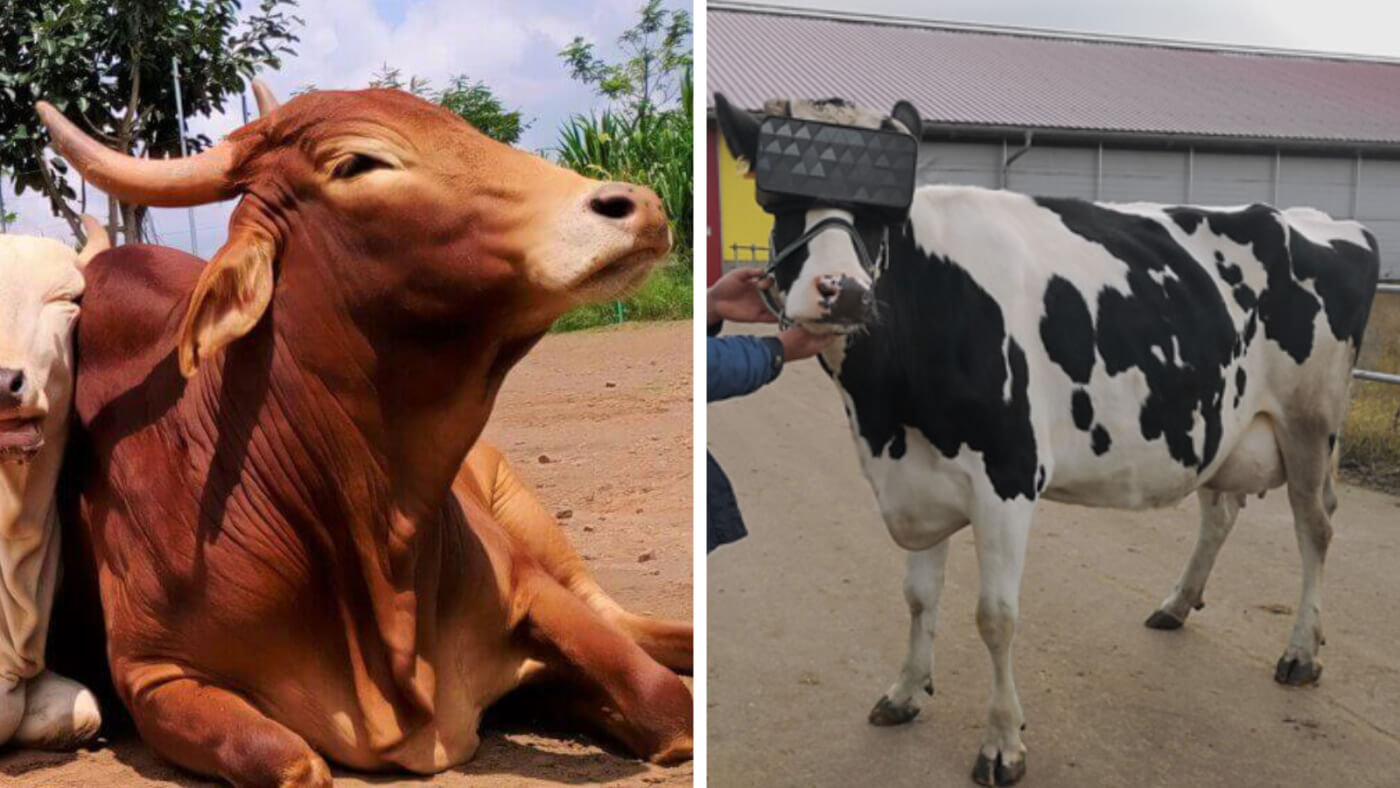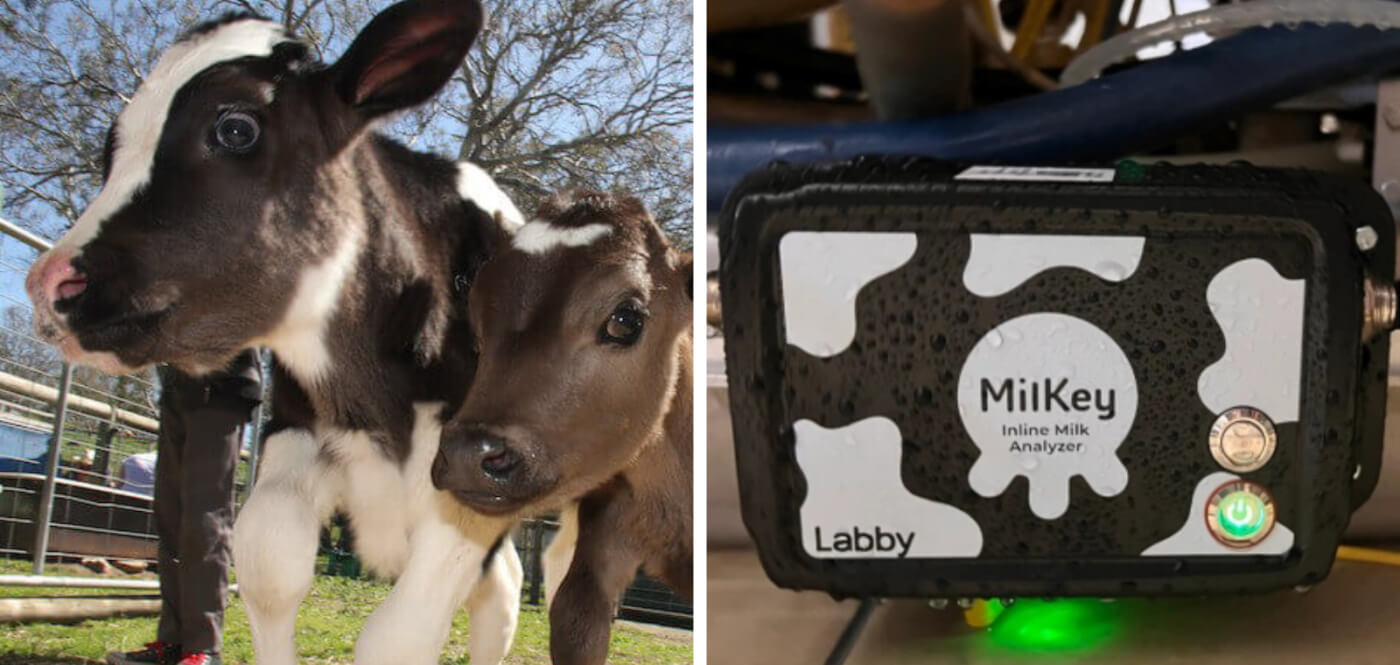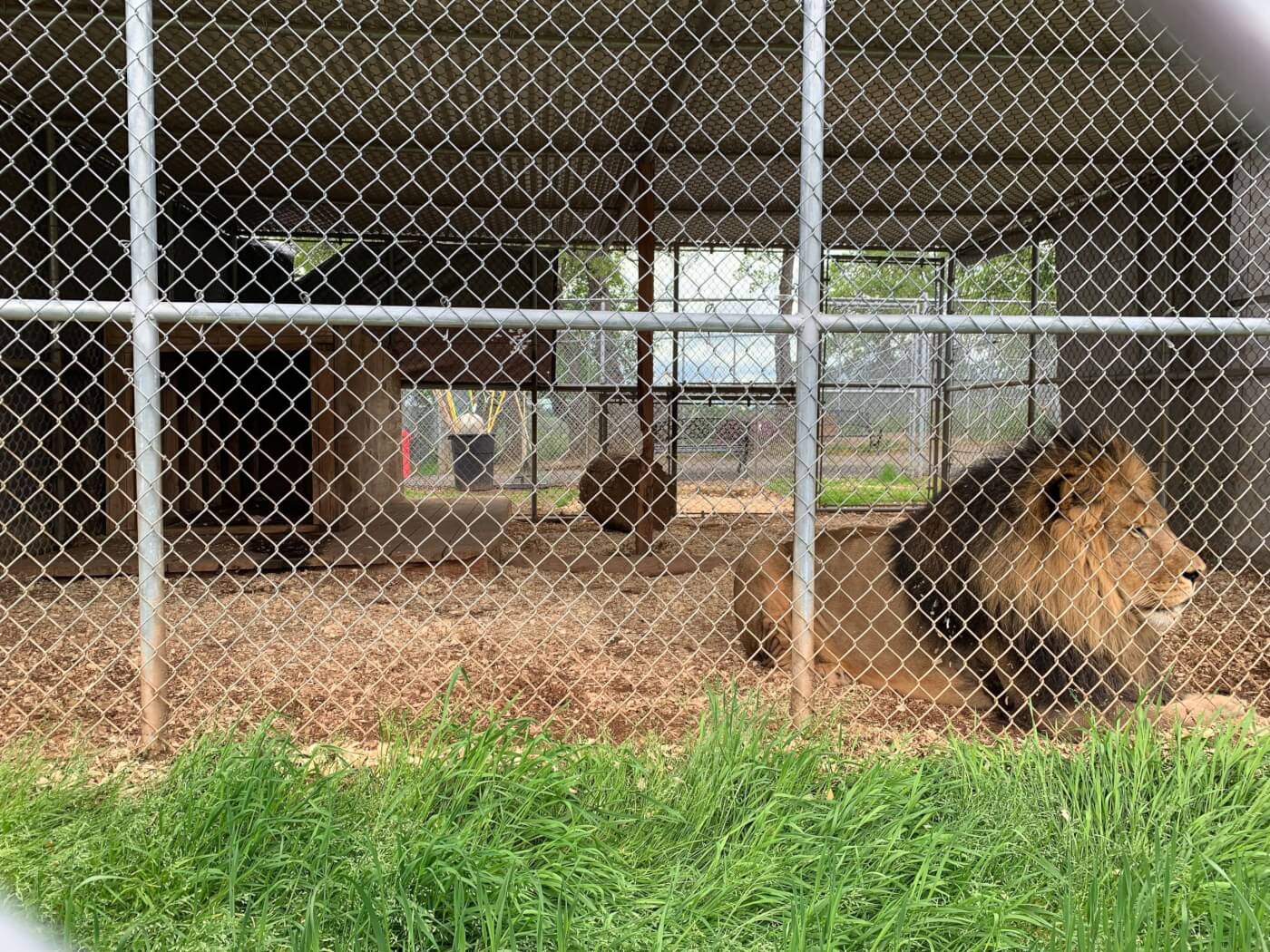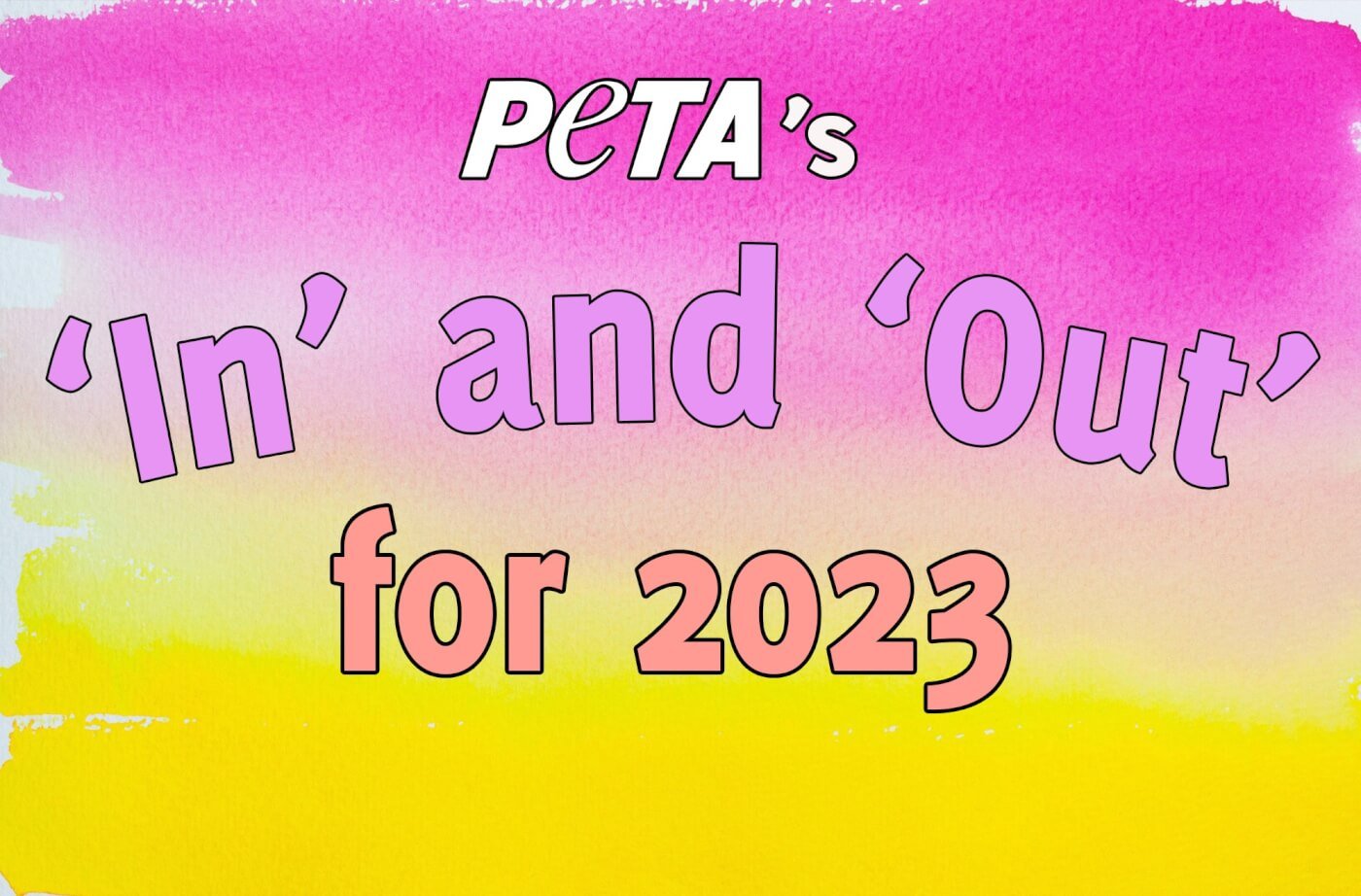With health and wellness technology in the limelight, we’ve seen plenty of devices that benefit animals: Microchips have helped us reunite with lost companions for decades, and now there are weight-detecting litterboxes, health-tracking smart collars, and 3D-printed custom prosthetics. It’s wonderful that technology can help us look out for our fellow animals.
But people who exploit mother cows for their milk have embraced technology for a much darker purpose: squeezing as much profit as they can out of suffering animals. Devices like milk-monitoring boxes and health-tracking collars are sold with the promise of helping them, but they’re actually used to tell farmers when to forcibly impregnate cows in order to boost supplies of stolen milk.
Fortunately, we know a few things that really make cows happy:
Soft Grass Under Their Hooves and in Their Stomachs
Cows love to hang out on soft grass instead of standing in crowded lots full of their own feces. Under 5% of lactating cows in the U.S. are allowed regular access to grassy fields during the grazing season. The farmer pictured below even strapped a pair of virtual reality goggles onto a cow in order to show her a beautiful field instead. This is so disrespectful. Just give her the goods!
Human Care, Not Human Domination
Would you prefer the freedom to gather at a watering hole with your buddies or a collar that tracked your bodily functions?
People who exploit cows for profit have another option: letting them graze, play, and otherwise exist in peace instead of forcibly impregnating them and stealing the milk meant for their babies. For those who truly want to care for cows, farm sanctuaries are the perfect place to shower them with all the resources and affection they want.
The Opportunity to Raise Their Calves
Instead of monitoring milk in order to spot the signs of painful bacterial infections of cows’ udders, we can leave their teats out of filthy, harsh milking machines. Cows’ make milk for only one reason: to feed their calves.
Mother-calf bonds are strong, and there are countless reports of mother cows who continue to call and search frantically for their babies after the calves have been taken away and sold to veal or beef farms. Staying away from mother cows and their young would make a meaningful difference in their lives.
Cows Need Dignity Before Technology
No amount of technology will make animals happy if we don’t respect them. We can do that by not eating them, stealing the milk meant for their babies, or harming them in any other way.
By going vegan, you can save nearly 200 animals a year—including cows—who want nothing more than to be left in peace. Check out our free vegan starter kit with all the tips you’ll need to get started living compassionately today!
Order a Free Vegan Starter Kit!
The post What Cows Want More Than Anything (Hint: It’s Not Tech) appeared first on PETA.




